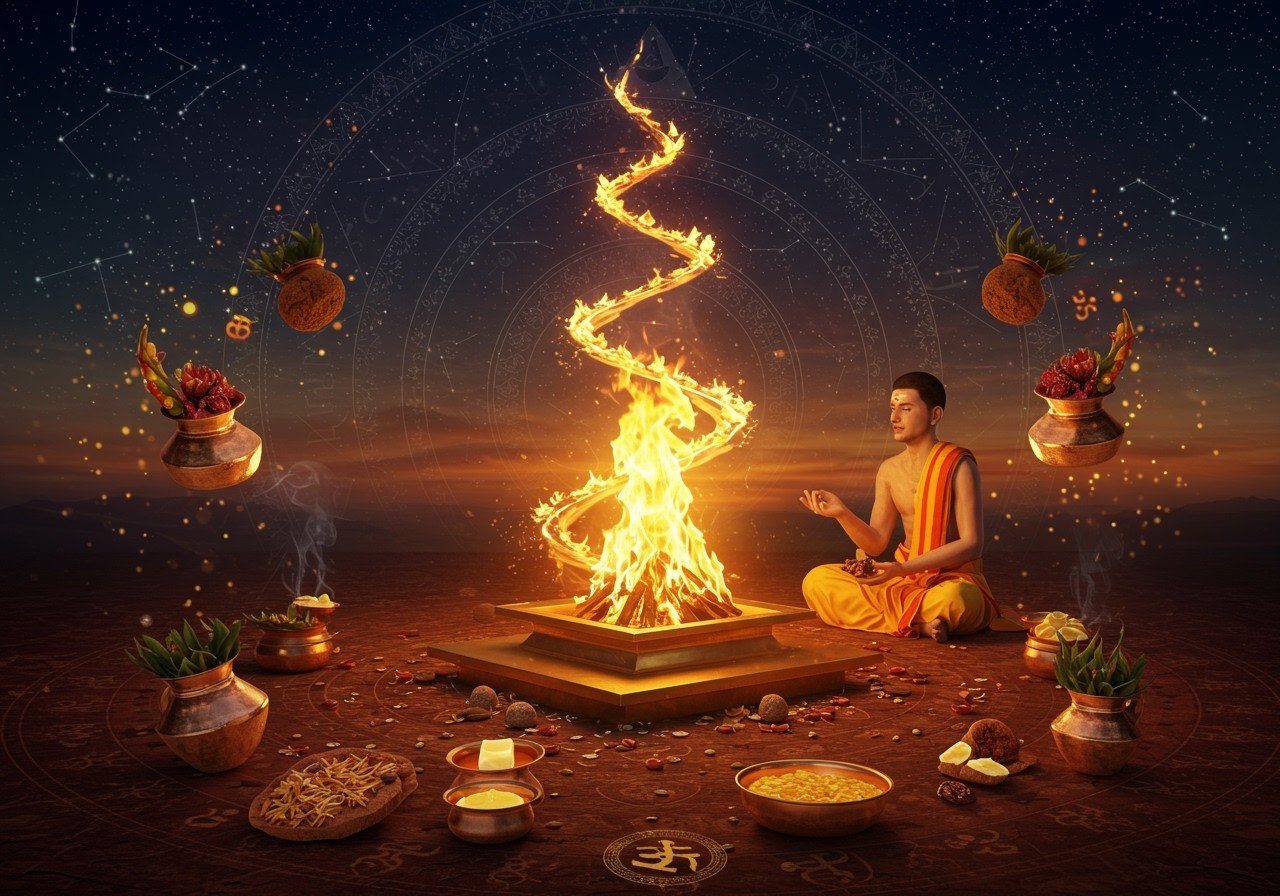
Agnihotra, a time-honored Vedic ritual, connects us with the divine through the simple yet profound act of offering to the sacred fire. Performed at sunrise and sunset, this ancient practice transcends mere ritual, becoming a pathway to purify our surroundings, enhance our well-being, and deepen our spiritual connection. Its significance is beautifully depicted in the popular Indian television serial “Agnihotra,” which captivated audiences with its portrayal of traditional values and the transformative power of ritual.
Delving into the Essence of Agnihotra
Agnihotra isn’t just a ritual; it’s a conversation with nature and the cosmos. Performed at the precise moments of sunrise and sunset, it involves offering grains of rice mixed with pure ghee into a specially designed copper pyramid, while chanting specific mantras. This practice, rooted in Vedic tradition, is believed to harmonize the energies around us, promoting balance and well-being.
In the “Agnihotra” serial, this ritual played a central role, subtly weaving its significance into the lives of the characters. It served as a symbol of purity, a connection to the divine, and a reminder of the enduring power of tradition.
The Ritual’s Transformative Benefits
The benefits of Agnihotra extend beyond the spiritual realm, influencing our physical and mental well-being. Let’s explore some of these remarkable effects:
- Purifies the Air: The copper pyramid, combined with the burning ghee and cow dung cakes, generates negative ions that cleanse the air of pollutants and harmful particles, creating a purer atmosphere.
- Enhances Mental Clarity: Chanting the mantras during Agnihotra calms the mind, reduces stress, and promotes a sense of inner peace. This practice neutralizes negative energy and fosters positivity.
- Supports Physical Health: Traditionally, Agnihotra is believed to purify the blood, improve circulation, and even rejuvenate brain cells. The smoke produced during the ritual may also have a soothing effect on the nervous system.
- Nurtures the Earth: The ash generated from Agnihotra is rich in nutrients, making it a valuable fertilizer for plants. It enhances soil health, promotes crop growth, and strengthens resistance to pests.
For a deeper understanding of the science and significance of such rituals, you can explore our blog post on The Science of Puja: How Rituals Enhance Well-being.
Performing Agnihotra: A Step-by-Step Guide
Here’s a guide to performing Agnihotra with reverence and precision:
1. Timing is Key
Agnihotra must be performed at the exact time of sunrise and sunset. Consult a Hindu calendar (Panchang) or a reliable Agnihotra app for precise timings in your location. Accuracy in timing is crucial for maximizing the benefits of the ritual.
2. Gathering the Sacred Materials
You’ll need the following items:
- Copper Pyramid: A specifically sized copper pyramid is essential for Agnihotra. Its shape and material are believed to play a crucial role in channeling energy.
- Dried Cow Dung Cakes: These serve as the base of the fire and are considered sacred in Vedic tradition.
- Pure Cow Ghee: Clarified unsalted butter is used as an offering and fuel for the fire.
- Unpolished Rice Grains: Whole, unpolished rice grains are offered into the fire along with the ghee.
You can conveniently find authentic Hawan Samagri and other essential puja items on poojn.in.
3. Preparing the Sacred Fire
- Place a flat piece of dried cow dung at the base of the copper pyramid.
- Arrange ghee-coated pieces of dried cow dung inside the pyramid, ensuring proper airflow for a steady flame.
- Light a small piece of cow dung coated with ghee and use it to ignite the other pieces within the pyramid. A hand fan can be used to gently encourage the flame.
- Place a few grains of rice in your left palm or a clean dish, add a few drops of ghee, and divide the rice into two equal portions.
4. The Offering and Mantras
- Sunrise: At the precise moment of sunrise, chant the first mantra, “Sooryáya Sváhá,” and offer one portion of the rice into the fire with your right hand immediately after the word “Sváhá.” Then, chant the second mantra, “Prajapataye Swaaha,” and offer the remaining rice in the same manner.
- Sunset: At sunset, repeat the process with the evening mantras: “Agnaye Swaaha” and “Prajapataye Swaaha.”
Remember, the mantras are chanted only once, and only two offerings are given at each Agnihotra performance. This guide from Poojn.in helps you with the step-by-step guide to perform puja at home.
5. After the Ritual
- Observe the fire mindfully until the offerings are completely burned.
- Sit in quiet contemplation or meditation until the fire extinguishes naturally.
- Do not disturb the fire once the mantras have been chanted and the offerings made.
- The ash can be collected and used for various purposes, such as enriching the soil for plants or purifying drinking water.
Poojn.in, India’s leading online store for puja samagri and other spiritual needs, provides a wide selection of authentic products to support your Agnihotra practice. Browse our range of Hawan Samagri, copper pyramids, pure ghee, and other essential items, all carefully curated to ensure quality and authenticity. We also have roli and diya, which you will find helpful for your puja needs.
Agnihotra: A Timeless Tradition for Modern Times
As the “Agnihotra” serial demonstrated, the power of ancient rituals continues to resonate in our modern world. By embracing practices like Agnihotra, we connect with our heritage, cultivate inner peace, and contribute to the well-being of our environment. Poojn.in is here to support your spiritual journey by providing all the necessary resources to make your Agnihotra practice fulfilling and meaningful.
Learn more about the significance of Hawan in our blog post The Significance of Havan: A Spiritual Approach to Purifying Our Surroundings.


